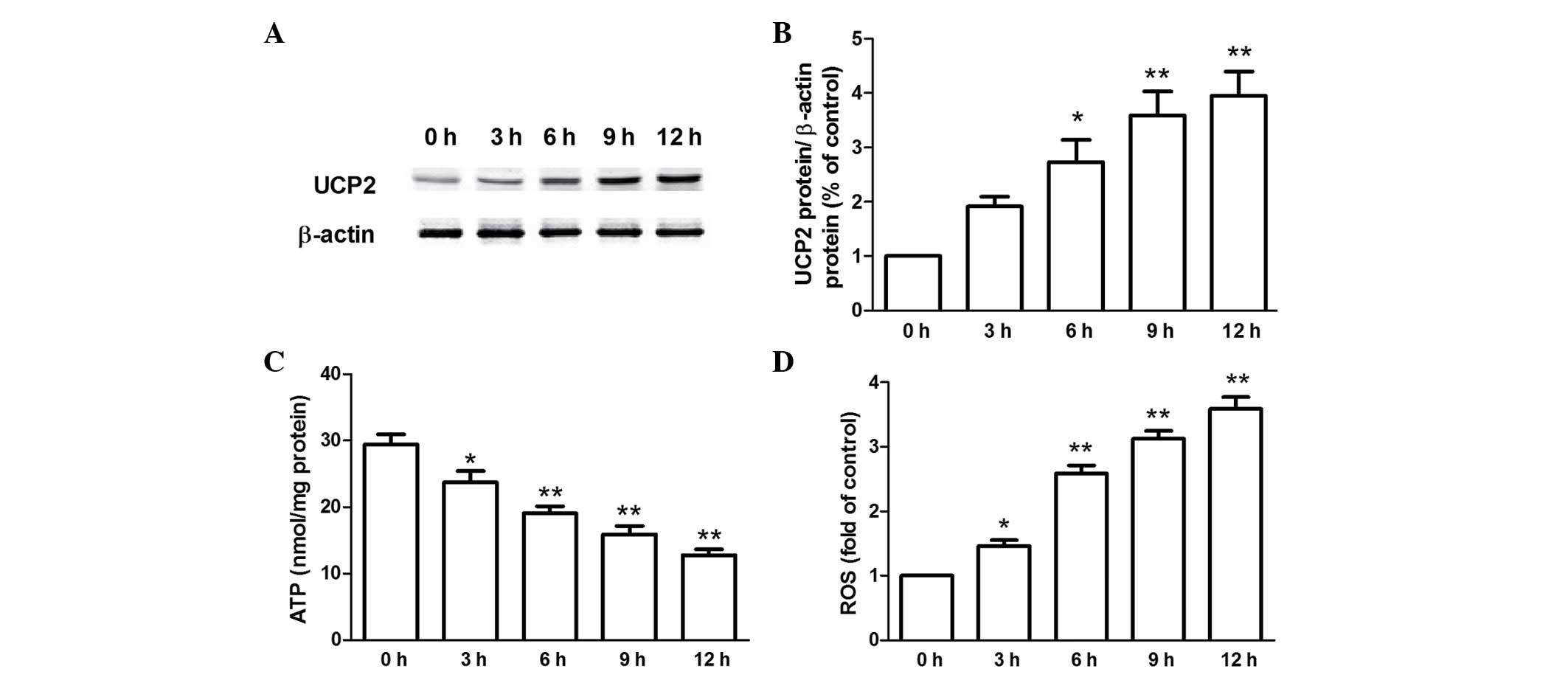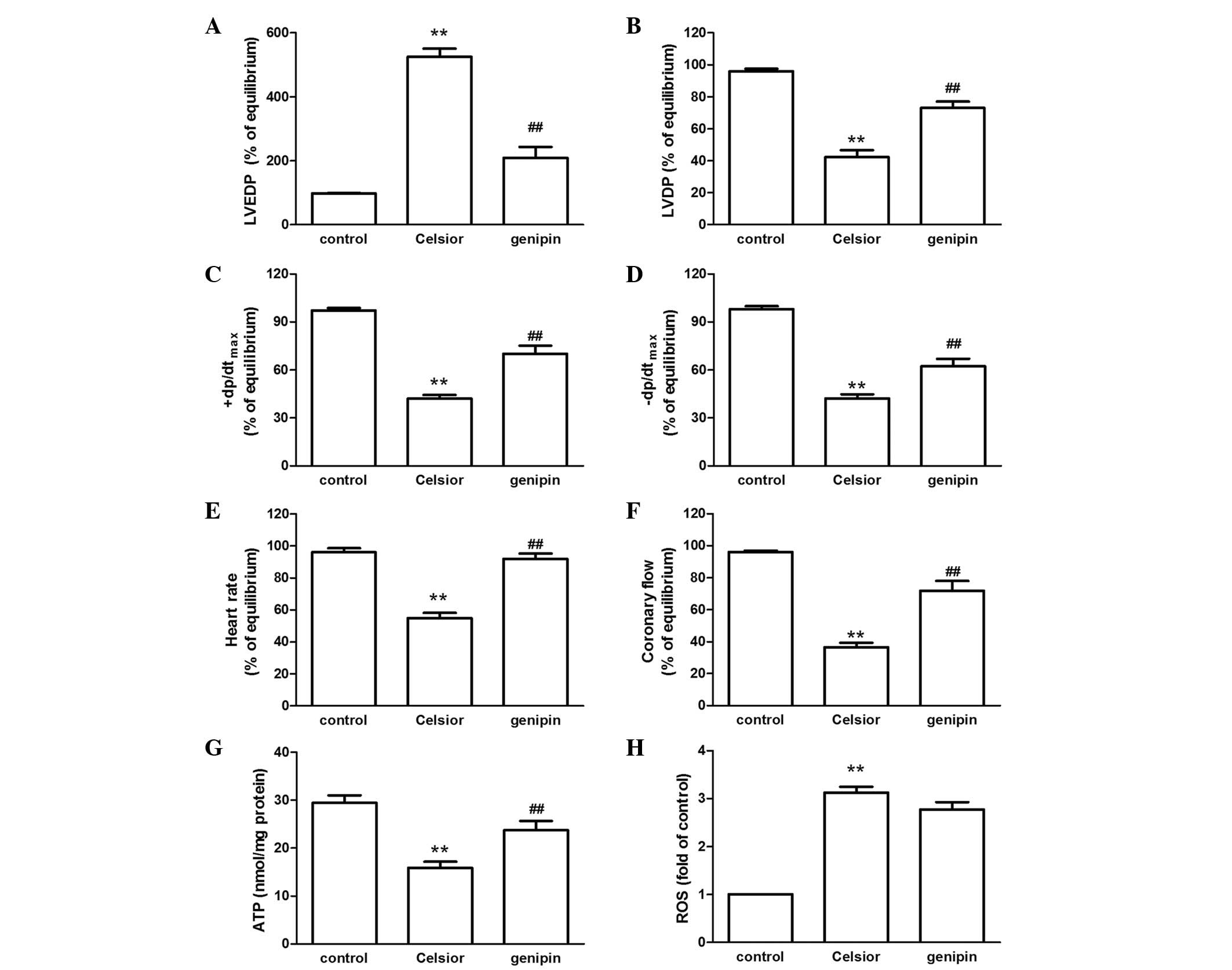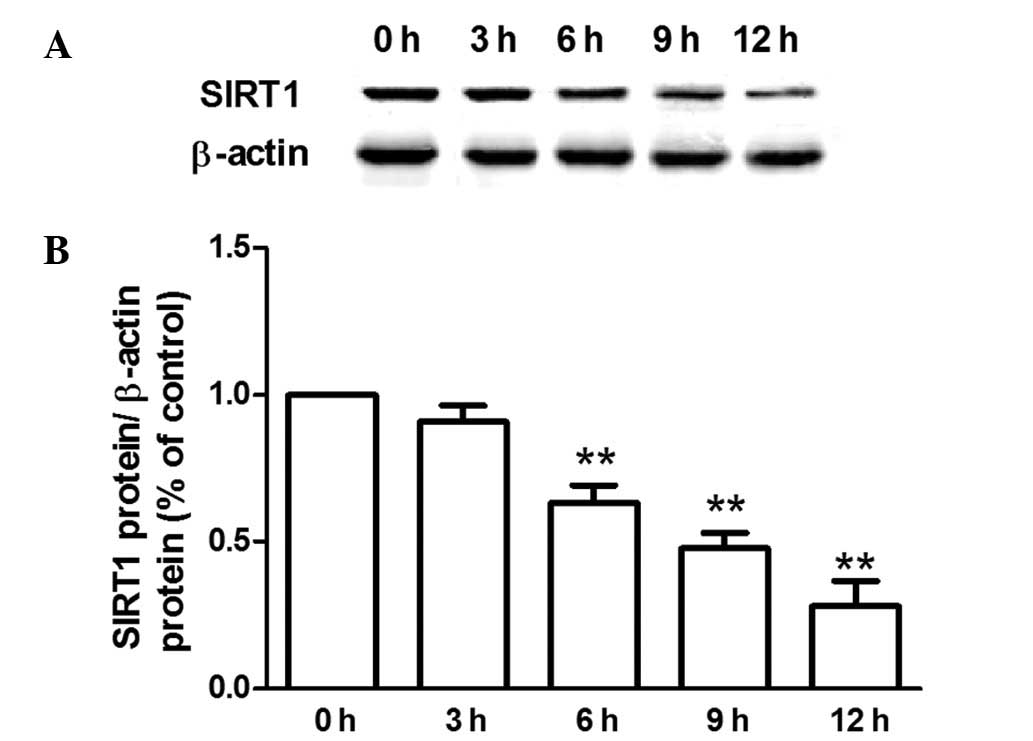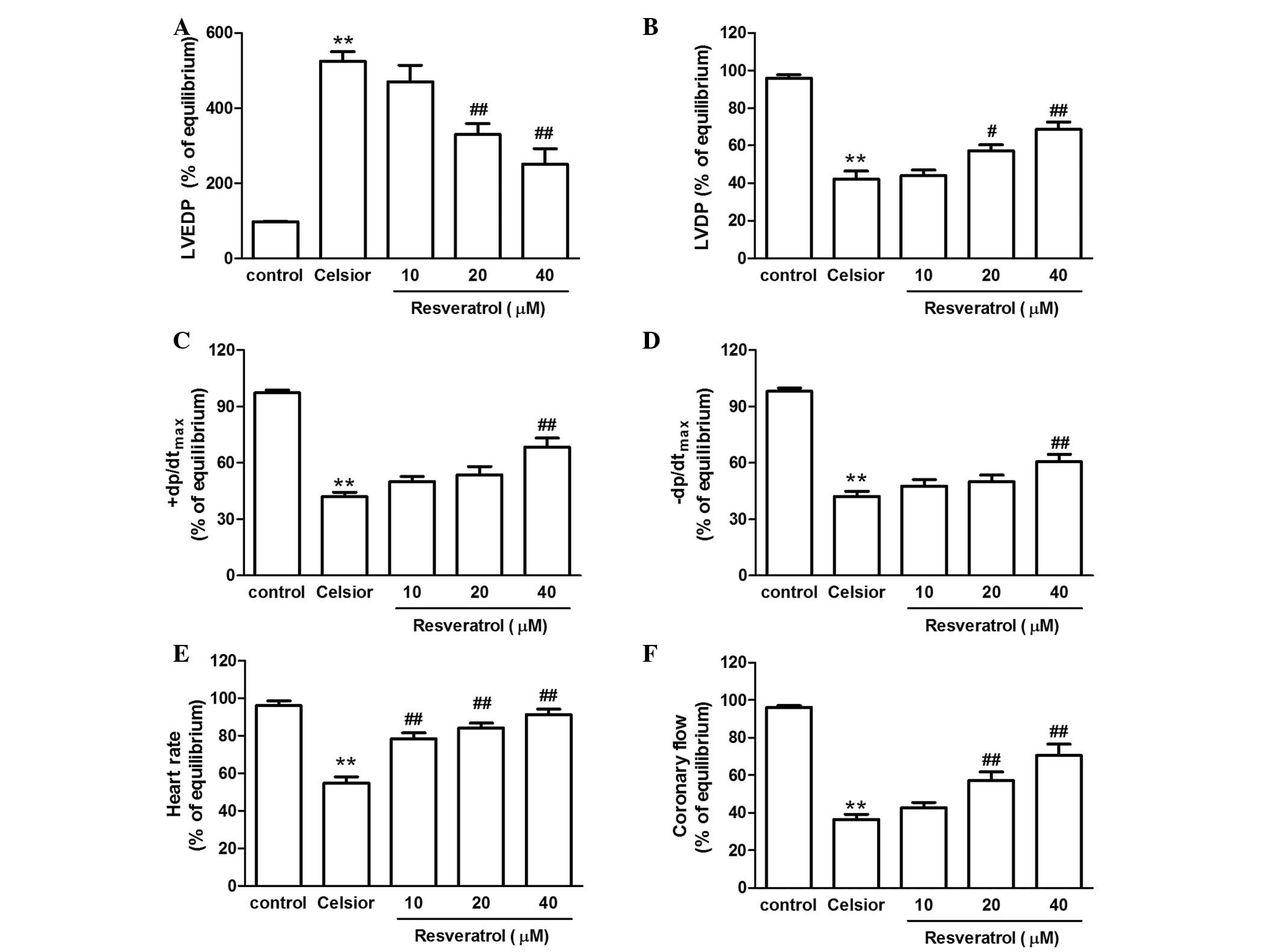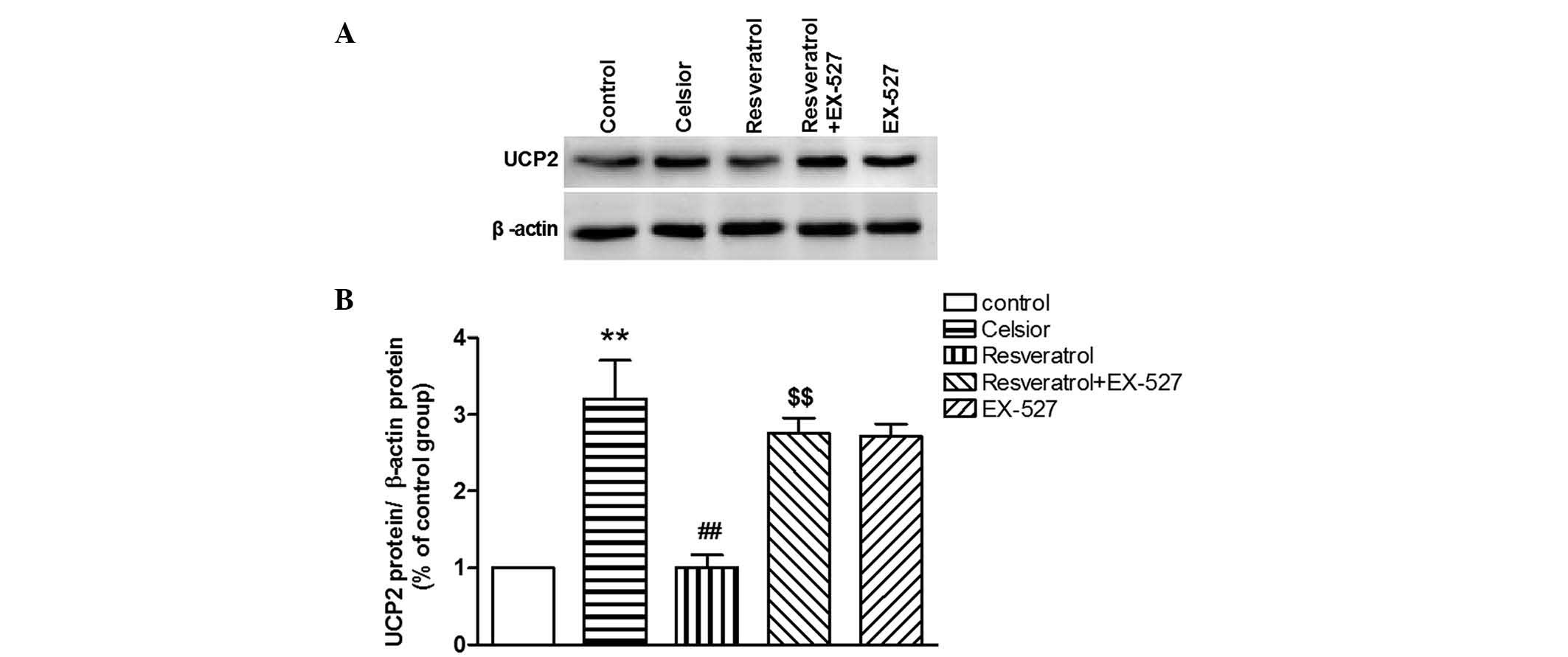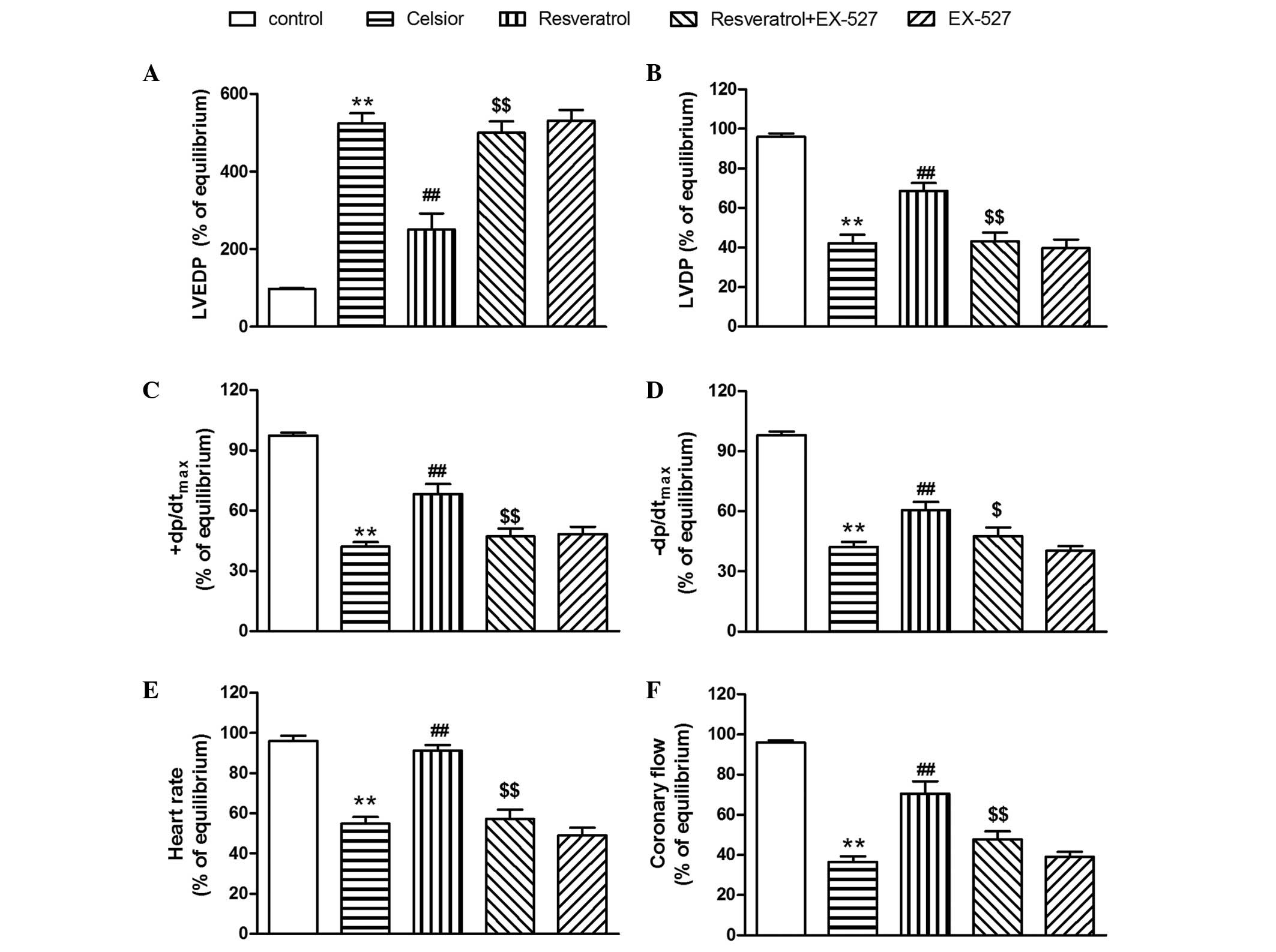|
1
|
Shah KB and Parameshwar J: Advances in
heart transplantation: The year in review. J Heart Lung Transplant.
30:241–246. 2011. View Article : Google Scholar
|
|
2
|
Cannon RM, Hughes MG, Jones CM, Eng M and
Marvin MR: A review of the United States experience with combined
heart-liver transplantation. Transpl Int. 25:1223–1228. 2012.
View Article : Google Scholar : PubMed/NCBI
|
|
3
|
Baines CP: The cardiac mitochondrion:
Nexus of stress. Annu Rev Physiol. 72:61–80. 2010. View Article : Google Scholar : PubMed/NCBI
|
|
4
|
Alán L, Smolková K, Kronusová E, Santorová
J and Jezek P: Absolute levels of transcripts for mitochondrial
uncoupling proteins UCP2, UCP3, UCP4 and UCP5 show different
patterns in rat and mice tissues. J Bioenerg Biomembr. 41:71–78.
2009. View Article : Google Scholar
|
|
5
|
McLeod CJ, Aziz A, Hoyt RF Jr, McCoy JP Jr
and Sack MN: Uncoupling proteins 2 and 3 function in concert to
augment tolerance to cardiac ischemia. J Biol Chem.
280:33470–33476. 2005. View Article : Google Scholar : PubMed/NCBI
|
|
6
|
Zungu M, Alcolea MP, Garcia-Palmer FJ,
Young ME and Essop MF: Genomic modulation of mitochondrial
respiratory genes in the hypertrophied heart reflects adaptive
changes in mitochondrial and contractile function. Am J Physiol
Heart Circ Physiol. 293:H2819–H2825. 2007. View Article : Google Scholar : PubMed/NCBI
|
|
7
|
National Research Council (US) Committee
for the Update of the Guide for the Care and Use of Laboratory
Animals: Guide for the Care and Use of Laboratory Animals. 8th
edition. National Academies Press; Washington, D.C: 2011
|
|
8
|
Yan ZK, Hu ZB, Pan XH, Chen YY, Zhang XM
and Shen YL: Diazoxide supplemented Celsior solution improves
hypothermic heart preservation effect in rat through activation of
mitochondrial ATP-sensitive potassium channel. Pharm Biol.
47:1060–1066. 2009. View Article : Google Scholar
|
|
9
|
Yang F, Chen WL, Zheng MZ, Yu GW, Xu HJ,
Shen YL and Chen YY: Heat shock protein 90 mediates anti-apoptotic
effect of diazoxide by preventing the cleavage of Bid in
hypothermic preservation rat hearts. J Heart Lung Transplant.
30:928–934. 2011.PubMed/NCBI
|
|
10
|
Zhou HY, Zhang LN, Zheng MZ, Wang LL, Chen
YY and Shen YL: Improved myocardial function with supplement of
levosimendan to celsior solution. J Cardiovasc Pharmacol.
64:256–265. 2014. View Article : Google Scholar : PubMed/NCBI
|
|
11
|
Teshima Y, Akao M, Jones SP and Marbán E:
Uncoupling protein-2 overexpression inhibits mitochondrial death
pathway in cardiomyocytes. Circ Res. 93:192–200. 2003. View Article : Google Scholar : PubMed/NCBI
|
|
12
|
Bodyak N, Rigor DL, Chen YS, Han Y,
Bisping E, Pu WT and Kang PM: Uncoupling protein 2 modulates cell
viability in adult rat cardiomyocytes. Am J Physiol Heart Circ
Physiol. 293:H829–H835. 2007. View Article : Google Scholar : PubMed/NCBI
|
|
13
|
Toda C and Diano S: Mitochondrial UCP2 in
the central regulation of metabolism. Best Pract Res Clin
Endocrinol Metab. 28:757–764. 2014. View Article : Google Scholar : PubMed/NCBI
|
|
14
|
Brand MD, Affourtit C, Esteves TC, Green
K, Lambert AJ, Miwa S, Pakay JL and Parker N: Mitochondrial
superoxide: Production, biological effects and activation of
uncoupling proteins. Free Radic Biol Med. 37:755–767. 2004.
View Article : Google Scholar : PubMed/NCBI
|
|
15
|
Ishizawa M, Mizushige K, Noma T, Namba T,
Guo P, Murakami K, Tsuji T, Miyatake A, Ohmori K and Kohno M: An
antioxidant treatment potentially protects myocardial energy
metabolism by regulating uncoupling protein 2 expression in a
chronic beta-adrenergic stimulation rat model. Life Sci.
78:2974–2982. 2006. View Article : Google Scholar : PubMed/NCBI
|
|
16
|
Murray AJ, Panagia M, Hauton D, Gibbons GF
and Clarke K: Plasma free fatty acids and peroxisome
proliferator-activated receptor alpha in the control of myocardial
uncoupling protein levels. Diabetes. 54:3496–3502. 2005. View Article : Google Scholar : PubMed/NCBI
|
|
17
|
Yacoub R, Lee K and He JC: The Role of
SIRT1 in Diabetic Kidney Disease. Front Endocrinol (Lausanne).
5:1662014.
|
|
18
|
Rehan L, Laszki-Szcząchor K,
Sobieszczańska M and Polak-Jonkisz D: SIRT1 and NAD as regulators
of ageing. Life Sci. 105:1–6. 2014. View Article : Google Scholar : PubMed/NCBI
|
|
19
|
Philp A and Schenk S: Unraveling the
complexities of SIRT1-mediated mitochondrial regulation in skeletal
muscle. Exerc Sport Sci Rev. 41:174–181. 2013. View Article : Google Scholar : PubMed/NCBI
|
|
20
|
Kitada M and Koya D: SIRT1 in type 2
diabetes: Mechanisms and therapeutic potential. Diabetes Metab J.
37:315–325. 2013. View Article : Google Scholar : PubMed/NCBI
|
|
21
|
Sundaresan NR, Pillai VB and Gupta MP:
Emerging roles of SIRT1 deacetylase in regulating cardiomyocyte
survival and hypertrophy. J Mol Cell Cardiol. 51:614–618. 2011.
View Article : Google Scholar : PubMed/NCBI
|
|
22
|
Planavila A, Dominguez E, Navarro M,
Vinciguerra M, Iglesias R, Giralt M, Lope-Piedrafita S, Ruberte J
and Villarroya F: Dilated cardiomyopathy and mitochondrial
dysfunction in Sirt1-deficient mice: A role for Sirt1-Mef2 in adult
heart. J Mol Cell Cardiol. 53:521–531. 2012. View Article : Google Scholar : PubMed/NCBI
|
|
23
|
Lu TM, Tsai JY, Chen YC, Huang CY, Hsu HL,
Weng CF, Shih CC and Hsu CP: Downregulation of Sirt1 as aging
change in advanced heart failure. J Biomed Sci. 21:572014.
View Article : Google Scholar : PubMed/NCBI
|
|
24
|
Nadtochiy SM, Yao H, McBurney MW, Gu W,
Guarente L, Rahman I and Brookes PS: SIRT1-mediated acute
cardioprotection. Am J Physiol Heart Circ Physiol. 301:H1506–H1512.
2011. View Article : Google Scholar : PubMed/NCBI
|
|
25
|
Chaudhary N and Pfluger PT: Metabolic
benefits from Sirt1 and Sirt1 activators. Curr Opin Clin Nutr Metab
Care. 12:431–437. 2009. View Article : Google Scholar : PubMed/NCBI
|
|
26
|
Pangeni R, Sahni JK, Ali J, Sharma S and
Baboota S: Resveratrol: Review on therapeutic potential and recent
advances in drug delivery. Expert Opin Drug Deliv. 11:1285–1298.
2014. View Article : Google Scholar : PubMed/NCBI
|
|
27
|
Granzotto A and Zatta P: Resveratrol and
Alzheimer's disease: Message in a bottle on red wine and cognition.
Front Aging Neurosci. 6:952014. View Article : Google Scholar : PubMed/NCBI
|
|
28
|
Zong Y, Sun L, Liu B, Deng YS, Zhan D,
Chen YL, He Y, Liu J, Zhang ZJ, Sun J and Lu D: Resveratrol
inhibits LPS-induced MAPKs activation via activation of the
phosphatidylinositol 3-kinase pathway in murine RAW 264.7
macrophage cells. PLoS One. 7:e441072012. View Article : Google Scholar : PubMed/NCBI
|
|
29
|
Centeno-Baez C, Dallaire P and Marette A:
Resveratrol inhibition of inducible nitric oxide synthase in
skeletal muscle involves AMPK but not SIRT1. Am J Physiol
Endocrinol Metab. 301:E922–E930. 2011. View Article : Google Scholar : PubMed/NCBI
|
|
30
|
Rubattu S, Di Castro S, Cotugno M, Bianchi
F, Mattioli R, Baima S, Stanzione R, Madonna M, Bozzao C, Marchitti
S, et al: Protective effects of Brassica oleracea sprouts extract
toward renal damage in high-salt-fed SHRSP: Role of AMPK/PPARα/UCP2
axis. J Hypertens. 33:1465–1479. 2015. View Article : Google Scholar : PubMed/NCBI
|
|
31
|
Wang SJ, Zhao XH, Chen W, Bo N, Wang XJ,
Chi ZF and Wu W: Sirtuin 1 activation enhances the
PGC-1/mitochondrial antioxidant system pathway in status
epilepticus. Mol Med Rep. 11:521–526. 2015.
|



